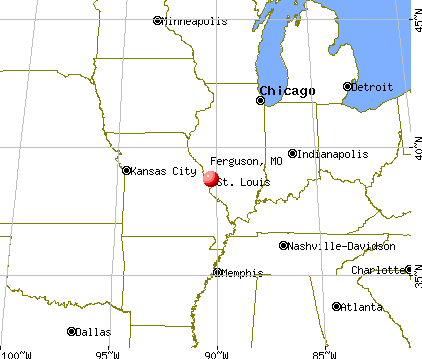
The situation prevailing in Ferguson, Missouri, could happen in other cities, where the majority population is not necessarily African-American but Latina.
La Opinión and other national newspapers documented the tremendous disparate society that exists in this small town of just over 21,000 people. 69% of their population belongs to minority groups of African-Americans, while the city government, the school district and other powers are fully captured by the dominant group. From a total of 53 policemen in Ferguson, only three are African-American; others are Americans of European descent.
So it is no surprise that 82% of those detained by police are of African descent and 92% of those arrested are also members of this ethnic group.
We currently do not know exactly the facts that preceded the killing of the 18-year-old African-American by Officer Darren Wilson, who used his gun six times to end his life.
We know that Michael Brown, the young man who ended up being gunned down, had an incident at a store in Ferguson. Through the security cameras of the store, it is clear that Brown who is in the midst of a fight, sharply rebukes local workers and then leaves the store.
The theft of small items does not give any argument to any police officer to use a lethal weapon to end a person’s life, including an offender unless the life of the police officer is in imminent danger.
A police officer is not a judge, and should never take the law into his own. For that we have a competent legal system that requires us to respect the rights of the accused to be prosecuted, tried and punished.
Something troubling in Ferguson’s case is that that same Brown experience can happen in a city where the Latino population is majority or at least has more than 30% of the population. The City of Los Angeles, according to a 2013 Census estimate, has 3,884,307 inhabitants. Of these, 28.7% are white ethnic groups. However, almost 70% of the 10,000 police officers are from this group, while 3,200 of them or a little more than 30% belong to minority groups.
This does not mean that Latino police will not arrest the offender of their own group, but these cops are more knowledgeable about the culture and usual manners that, when doing their work, will allow them to act more cautiously.
Smaller cities show the differences more clearly between the numerically majority population and the power links. According to Census 2010, the city of Costa Mesa in California has 109,960 inhabitants. Of this total, 38.5% are Latinos. However, since this city was founded, there has not been a Latino representative on the city council. The police are largely the dominant ethnic group.
In Fullerton, a medium-sized city in California, with a population of 126,003 inhabitants, 38,014 are Latino; i.e. 30.8% of the total. Like Costa Mesa and most medium towns of Orange County, power positions are filled by people who belong to white ethnics, including academic institutions, school districts and the police department.
What does the above mean? The demographics tell us that the Latino population has increased in number but not in terms of power. What happened in Ferguson can serve dominant groups to realize that the total monopolization of power can produce unpredictable negative consequences. Moreover, the Latino community must recognize and become aware that it is time to take positive steps towards a better representation in local government. The vote is the best weapon against the monopolization of power.
Humberto Caspa, Ph.D., is a professor and researcher of Economics On The Move. E-mail: hcletters@yahoo.com



